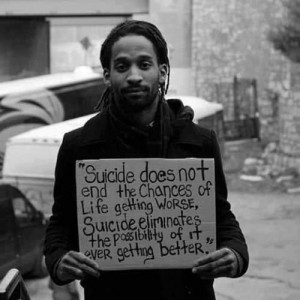
Two new reports highlight the rise in drug-related suicide attempt visits to hospital emergency departments especially among certain age groups. The reports by the Substance Abuse and Mental Health Services Administration (SAMHSA) show that overall there was a 51 percent increase for these types of visits among people 12 and older — from 151,477 visits in 2005 to 228,277 visits in 2011.
One report analyzed the increase in emergency department visits by age and found that the overall rise resulted from increases in visits by people aged 18 to 29 and people aged 45 to 64. Visits involving 18 to 29 year olds increased from 47,312 in 2005 to 75,068 — a 58 percent increase. Visits involving people aged 45 to 64 increased from 28,802 in 2005 to 58,776 visits in 2011 — a 104 percent increase. In 2011, these two age groups comprised approximately 60 percent of all drug-related emergency department visits involving suicide attempts.
The other SAMHSA report focused on the 45 to 64 age group, which had the largest increase in emergency department visits involving drug related suicide attempts, and characterized these visits. The report found that the majority (96 percent in 2011) of these visits involved the non-medical use of prescription drugs and over-the-counter-medications. In 2011, these drugs included anti-anxiety and insomnia medications (48 percent), pain relievers (29 percent) and antidepressants (22 percent).
Other substances involved in these drug-related suicide attempt emergency department visits during the same year included alcohol (39 percent) and illicit drugs (11 percent).
The report also found that these visits by patients aged 45 to 64 doubled for both men and women during this time period.
“Suicide continues to take lives without regard to age, income, education, social standing, race, or gender.” said SAMHSA Administrator, Pamela S. Hyde. “It is a growing risk in far too many segments of our society. We must all do everything we can to combat this preventable and needless loss of life and the devastation it inflicts upon friends, families and communities across our nation.”
SAMHSA’s Suicide Prevention Resource Center at http://www.sprc.org provides information on a wide range of suicide prevention programs and resources who are dealing with this issue can draw upon. SAMHSA’s National Suicide Lifeline at 1-800-273-TALK (8255) or http://www.suicidepreventionlifeline.org/ provides real time, toll free, confidential suicide prevention counseling services 24/7 all year round to people in immediate crisis, or who may know someone who they fear might be considering suicide.
SAMHSA’s, Visits to Emergency Departments for Drug-Related Suicide Attempts Increased report is available at:http://www.samhsa.gov/data/spotlight/spot150-suicide-attempts.pdf and SAMHSA’s Emergency Department Visits for Drug-Related Suicide Attempts among Middle-Aged Adults Aged 45-64 report is available at:
http://www.samhsa.gov/data/2K14/DAWN154/sr154-suicide-attempts-2014.pdf .
Both SAMHSA reports are based on the combined findings of SAMHSA’s 2005 to 2011 Drug Abuse Warning Network (DAWN) reports. DAWN is a public health surveillance that monitors drug-related hospital emergency department visits throughout the U.S.
For more information about SAMHSA please visit: http://www.samhsa.gov/




